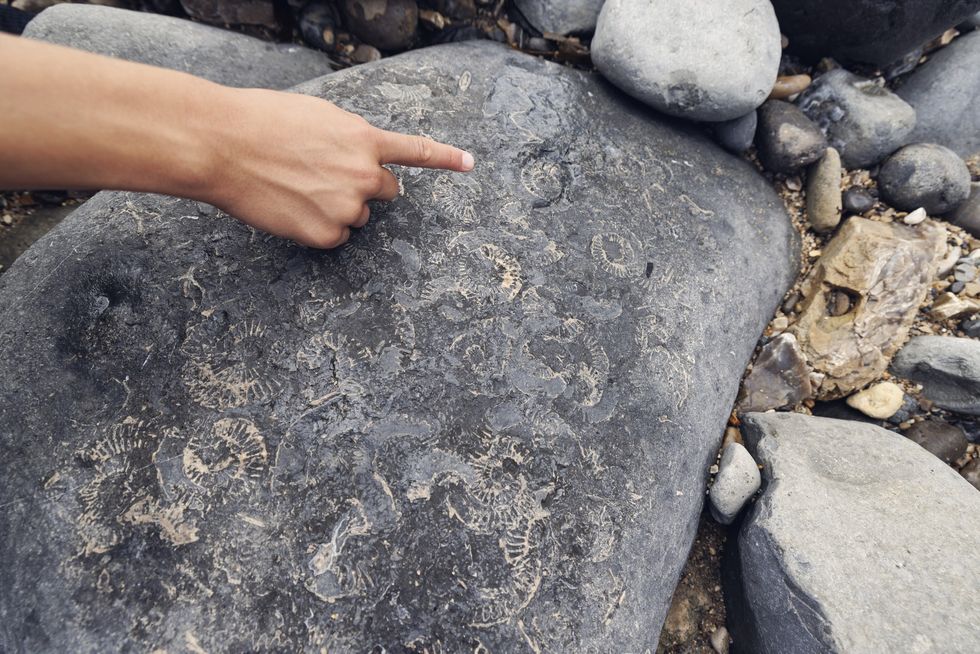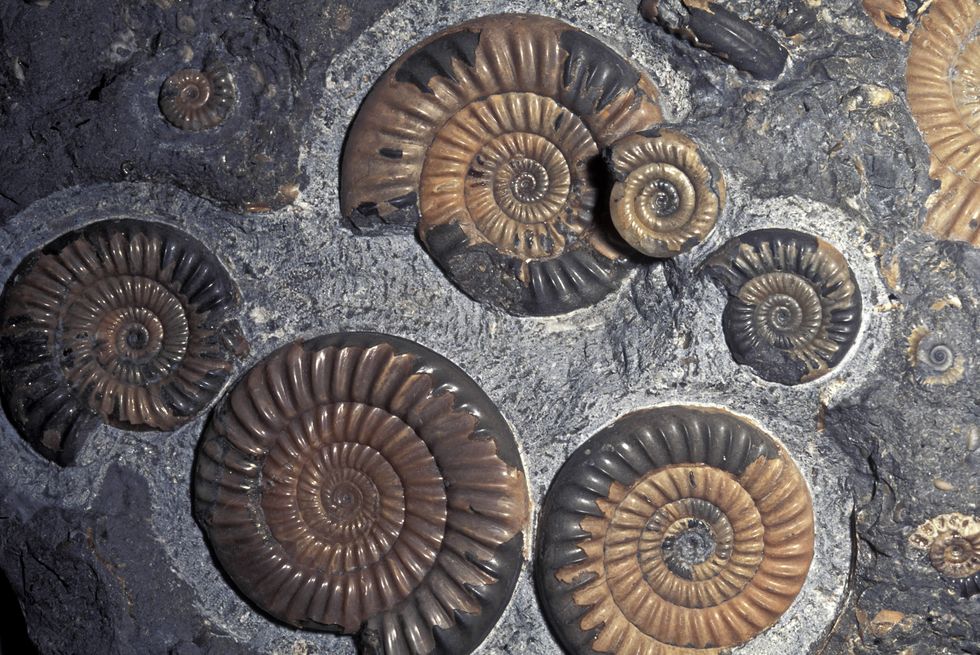The fossil enthusiast found the ancient remains embedded in limestone rocks that had become exposed during garden work
Don't Miss
Most Read
Trending on GB News
A seven-year-old boy has unearthed fossils dating back 140 million years in his garden in Matlock, Derbyshire.
Elliott, who moved into his new home just three months ago, made the remarkable discovery whilst digging in his front garden.
The young fossil enthusiast found the ancient remains embedded in limestone rocks that had become exposed during garden work.
Upon cracking open the rocks, Elliott and his parents were astonished to discover they contained preserved Jurassic creatures from a time when dinosaurs roamed the Earth.

The young fossil enthusiast found the ancient remains embedded in limestone rocks that had become exposed during garden work (Stock Image)
GETTY
Elliott was thrilled with his prehistoric find, saying: "I love fossils. It made me really happy we just found it."
He explained: "When I look at one of my fossils, it makes me really interested and I think, how many more dinosaurs can I find?"
"Finding fossils is really inspiring and I want to do it more. They look so cool," Elliott added.
His mother Gemma, 42, shared in his excitement. "He's very excited - I'm not sure we like digging up the garden so much," she said.
MORE LIKE THIS:
"But it's very exciting what he's finding, I'm very proud of him."
Dr Susannah Lydon, a palaeontologist at the University of Nottingham, explained that fossils are more common than many people might expect.
Despite Matlock sitting on a rock that was once an ancient reef, Dr Lydon believes Elliott's fossils were brought from elsewhere by humans.
She thinks this was probably done by either collectors or builders who took them from Dorset.

The rocks are approximately 140 to 180 million years old and contain ammonites – spiral-shelled molluscs that inhabited ancient oceans during the time of dinosaurs (Stock Image)
GETTY
The rocks are approximately 140 to 180 million years old and contain ammonites – spiral-shelled molluscs that inhabited ancient oceans during the time of dinosaurs.
"The joy of fossil hunting is finding something nothing else has seen for millions of years," Dr Lydon added.
For those inspired by Elliott's discovery, Dr Lydon offered advice on finding fossils.
She emphasised that specialist equipment isn't necessary – knowing where to look is the key.
She said The best opportunities for fossil hunting are along coastal areas, particularly after storms have eroded cliff faces, adding: "It gives you a view through all those years."








